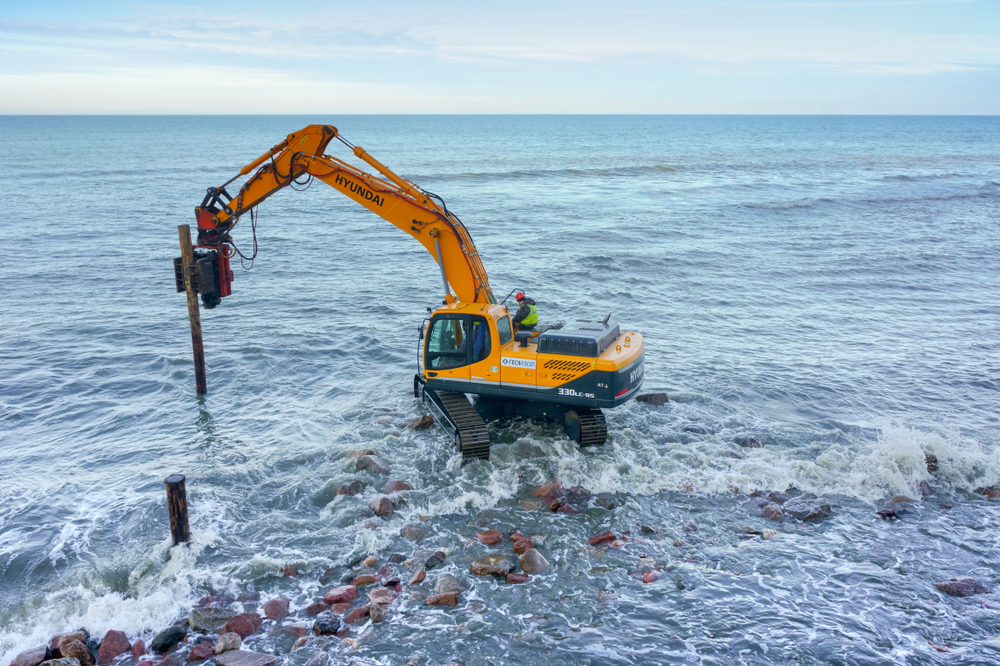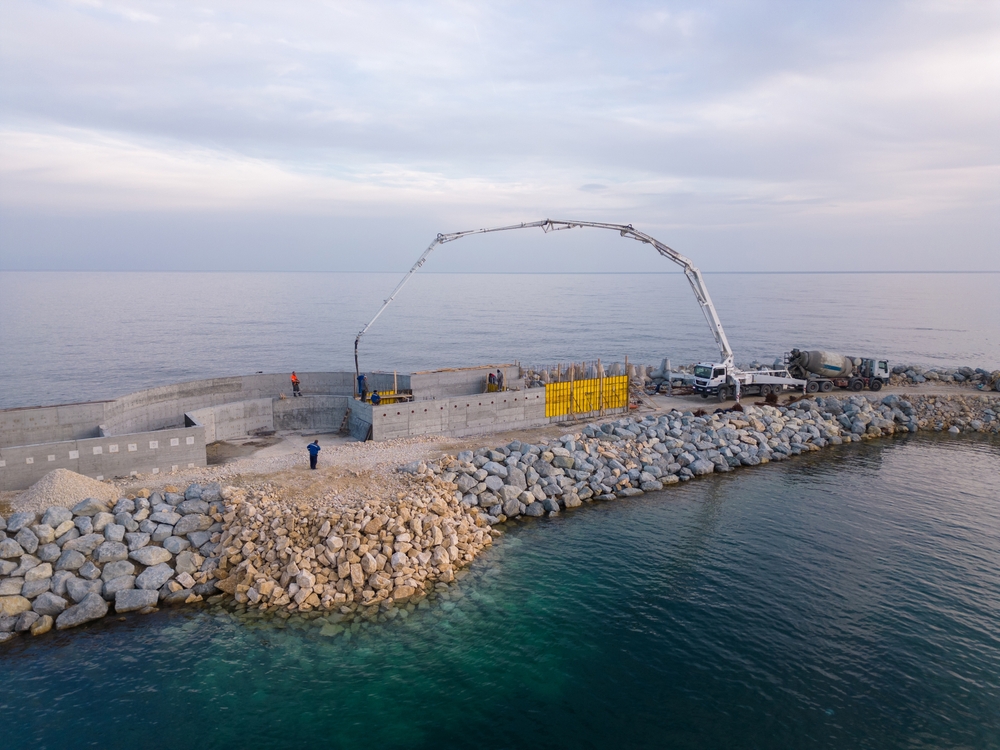Table of Contents
The stability and longevity of coastal infrastructure rely on well-engineered breakwaters, structures designed to protect shorelines, harbors, and marine facilities from wave action. For coastal engineers, contractors, and port authorities, understanding the key principles of breakwater design is essential to mitigating erosion, improving navigability, and safeguarding coastal assets. This article explores the critical design considerations, material choices, and challenges associated with breakwater construction.
Fundamentals of Breakwater Design
Breakwaters serve multiple functions in coastal engineering, including dissipating wave energy, controlling sediment transport, and creating calm water zones for marine activities. Their design is influenced by several environmental and engineering factors.
Types of Breakwaters
Breakwaters are classified based on their structural form and how they interact with wave forces. Choosing the right breakwater type depends on environmental conditions, wave intensity, construction feasibility, and long-term coastal protection goals. Each structure has unique performance characteristics and is best suited to specific site conditions.
Rubblemound Breakwaters
Rubblemound breakwaters are among the most widely used types due to their flexible design and excellent energy-absorbing capabilities. Constructed using layers of quarry rock or concrete armor units, these structures allow wave energy to dissipate gradually through their porous mass. Their adaptability to uneven seabed conditions and resistance to structural cracking make them ideal for high-energy environments. A notable example is the Port of Rotterdam, where rubblemound breakwaters play a critical role in stabilizing harbor waters and minimizing wave turbulence.
Vertical Wall Breakwaters
Unlike rubblemound designs, vertical wall breakwaters rely on mass and rigidity to reflect wave energy back to sea. These structures are typically made of reinforced concrete and are placed in areas where space is limited or where a calm water basin is essential, such as busy ports or ferry terminals. Although they are more prone to scouring at the base due to wave reflection, they require less horizontal footprint, making them suitable for deep-water applications. The Marseille Harbor in France is a well-known example that uses vertical wall breakwaters to maintain safe and calm docking conditions.
Composite Breakwaters
Composite breakwaters combine features of both rubblemound and vertical wall structures. They typically consist of a vertical wall supported by a rubblemound base, offering the reflective strength of concrete with the energy-dissipating benefits of natural rock. This hybrid design provides improved stability while reducing construction costs and material requirements. One successful implementation is found at the Port of Kobe in Japan, where composite breakwaters were used to optimize both performance and budget in a seismic-prone zone.
Floating Breakwaters
In environments where seabed installation is difficult or environmentally sensitive—such as protected marinas, aquaculture farms, or areas with soft sediment—floating breakwaters are often the most viable solution. These wave-attenuating structures are designed to rise and fall with tides while reducing wave height through buoyant platforms or modular units. Constructed from steel, concrete, or composite materials, floating breakwaters are anchored to the seabed and are particularly effective in low to moderate wave energy zones. While they don’t offer the same mass-based protection as fixed systems, their flexibility and ease of relocation make them ideal for temporary or dynamic coastal applications.
Key Engineering Considerations
The effectiveness of a breakwater depends on several factors, including wave dynamics, site-specific conditions, and construction materials.
Wave Climate and Hydrodynamic Forces
In breakwater design, the wave climate is one of the most influential factors determining the structure’s layout, durability, and long-term stability. Engineers must analyze local wave conditions to predict how forces from the ocean will interact with the structure under both normal and extreme scenarios. This is particularly important in coastal engineering, where inaccurate data can lead to premature failure or increased maintenance costs. The following wave-related parameters are critical in hydrodynamic analysis for breakwater construction:
Significant Wave Height (Hs)
This represents the average height of the highest one-third of all waves recorded over a given period. It is considered the most statistically reliable measure of wave height and is directly linked to the energy carried by incoming waves. A higher Hs indicates greater potential impact force on the breakwater, which must be factored into both structural sizing and armor unit selection. Underestimating Hs can lead to overtopping, structural instability, and accelerated erosion behind the breakwater.
From an engineering standpoint, Hs is used to define design wave conditions for both ordinary and extreme weather events, helping to determine the crest elevation, slope geometry, and thickness of the armor layer in rubblemound breakwaters.
Wave Period (T)
The wave period refers to the time interval between two successive wave crests passing a fixed point. This parameter influences how long the wave force acts on the structure and helps predict the wave’s energy and impact duration.
Long-period waves often carry more energy and penetrate deeper into coastal defenses, making them more destructive. In contrast, short-period waves create more frequent but less intense impacts. Engineers consider wave period to fine-tune the resonance effects and ensure that the breakwater design does not amplify wave forces due to natural frequency alignment.
Wave period also affects the required spacing and sizing of armor units and toe protection measures, especially in deeper water conditions.
Wave Energy and Direction
The energy of a wave is a function of both its height and period, and it determines how much force will be exerted on the breakwater. Equally important is the wave direction, which defines how waves approach the structure.
For instance, waves striking a breakwater at an oblique angle can cause complex diffraction and refraction patterns, leading to uneven stress distribution. This can result in localized scouring or erosion along the foundation if not properly accounted for.
Breakwater alignment is strategically designed to face prevailing wave directions, reducing the structure’s exposure to maximum energy loads. Engineers may also use numerical wave modeling to simulate wave behavior and determine the optimal orientation for energy dissipation and sediment control.

An excavator installs foundation piles for a breakwater, reinforcing coastal protection against erosion and storm surges. Proper pile driving ensures structural stability and long-term durability in marine construction.
Geotechnical and Seabed Conditions
The success of any breakwater structure depends heavily on the characteristics of the seabed it rests upon. Geotechnical conditions directly affect the stability, load distribution, and settlement behavior of coastal infrastructure. Before construction begins, engineers conduct detailed marine geotechnical investigations to assess the foundation’s suitability and identify potential challenges that could undermine the breakwater’s long-term performance. Understanding and addressing these seabed-related issues is crucial for coastal foundation engineering, especially in dynamic environments prone to erosion, subsidence, or extreme weather.
Soft Clay or Silt
Breakwaters built on soft or compressible soils, such as clay or silt, face significant risks of differential settlement, tilting, or even structural failure. These soils lack the shear strength to support heavy marine structures without reinforcement.
To address this, engineers apply ground improvement techniques such as:
-
Deep compaction, which densifies the soil and improves its load-bearing capacity.
-
Geotextile reinforcement, where high-strength fabrics are used to stabilize the base and reduce settlement.
-
Sand drains or stone columns, which help accelerate soil consolidation and improve drainage.
Proper treatment of soft soils ensures that the breakwater remains level and functional over time, even under high wave loads and tidal action.
Rocky Seabeds
While rocky seabeds offer excellent bearing capacity, they introduce their own set of construction difficulties. Installing foundations in such conditions often requires:
-
Precision drilling to create sockets or anchor points for structural elements.
-
Heavy-duty piling equipment capable of penetrating dense rock layers.
-
Blasting or cutting, in extreme cases, to level the construction platform.
These operations must be carefully managed to prevent over-excavation and avoid damaging surrounding marine habitats. Rocky seabeds may also limit design flexibility, making the early selection of suitable breakwater types—such as vertical wall or composite systems—even more critical.
Scouring Effects
Scour is the localized removal of seabed material caused by turbulent water flow around marine structures. It is a leading cause of breakwater foundation instability and can lead to toe undermining and eventual structural collapse if not properly mitigated.
To combat this, engineers implement toe protection strategies, including:
-
Submerged armor stone aprons, which absorb energy and prevent sediment displacement.
-
Scour mats and geobags, which provide immediate coverage and reduce erosion around the base.
-
Filter layers, placed beneath core materials to prevent fine soil loss while allowing water flow.
Scour protection is essential in high-energy coastal zones and in breakwaters subjected to tidal currents, vessel traffic, or storm surges.
Breakwater Structural Stability
The structural stability of a breakwater is a cornerstone of successful coastal protection. Designed to withstand powerful marine forces—including wave loading, tidal currents, and severe storm surges—breakwaters must be engineered for durability, energy dissipation, and long-term performance. Engineers consider several critical design elements when assessing how a breakwater will respond to these forces in real-world conditions.
Armor Layer Stability
The armor layer forms the first line of defense against incoming waves. This outer shell of the breakwater absorbs and disperses wave energy, reducing the impact on the underlying structure. To achieve this, engineers use large, interlocking concrete armor units such as Tetrapods, X-blocs, or Accropodes. These units are specifically designed for hydraulic stability, with irregular shapes that interlock and resist movement during heavy wave action. Armor layer stability is crucial to preventing displacement, minimizing maintenance needs, and preserving the breakwater’s protective function even during extreme weather events.
Core Material Selection
Beneath the armor lies the breakwater’s structural core, which must be both strong and cost-efficient. Well-graded quarry rock is commonly used due to its natural compaction and mass, making it effective in resisting wave forces transmitted through the armor layer. In some cases, especially in shallow or protected environments, engineers may use geotextile-enclosed sand to form the core. This method reduces material transportation costs and can be easier to place. Regardless of the material chosen, proper compaction and gradation are essential to maintaining the structural integrity of the breakwater over time.
Overtopping Control
Waves overtopping the crest of a breakwater can reduce its effectiveness and pose risks to nearby infrastructure. Engineers manage this risk through overtopping control, which involves optimizing the crest height, slope angle, and sometimes integrating secondary features such as splash walls or recurved parapets. The goal is to minimize wave transmission behind the structure without disrupting marine traffic or compromising visual aesthetics. In high-risk areas, reducing overtopping is vital to preventing backshore erosion, flooding, and operational downtime in ports and harbors.
Material Selection and Construction Techniques
Material selection is one of the most critical aspects of breakwater design, directly influencing a structure’s durability, wave resistance, and maintenance requirements. Coastal environments present harsh conditions—saltwater corrosion, wave impact, and shifting seabeds—which means every component must be carefully chosen to ensure long-term performance. Engineers evaluate factors such as availability, strength, stability, and environmental impact when selecting materials for different types of breakwaters.
Natural Rock for Rubblemound Breakwaters
Natural rock is the material of choice for rubblemound breakwater construction. Sourced from nearby quarries whenever possible, large stones are selected based on their density, shape, and durability against wave impact. These rocks are layered in a graded formation, starting with smaller core stones and ending with heavier armor stones on the surface. Natural rock is particularly valued for its permeability, which helps dissipate wave energy and reduce hydraulic pressure on the inner core. Its resilience to weathering and mechanical stress also makes it a low-maintenance and long-lasting option in many coastal protection projects.
Precast Concrete Armor Units
For projects requiring uniformity, hydraulic stability, and faster installation, engineers often turn to precast concrete armor units. These specially designed shapes—such as Tetrapods, Dolosse, and X-blocs—are engineered to interlock and resist displacement under wave attack. Unlike irregular natural stone, precast units offer predictable performance, especially in high-energy environments. They are ideal for steep slopes, narrow construction windows, or when local rock supply is insufficient. In addition, these units are often manufactured with additives to improve marine durability, helping them withstand decades of exposure to saltwater and freeze-thaw cycles.
Steel and Composite Materials for Floating Breakwaters
In locations where seabed construction is impractical or environmental disruption must be minimized, floating breakwaters are used. These structures rely on steel or composite materials, which offer a high degree of flexibility and modularity. Steel pontoons or reinforced composite shells are typically anchored to the seabed using chains or piles, allowing the breakwater to rise and fall with tides while still attenuating wave energy. Although floating breakwaters are less massive than traditional systems, their materials must be corrosion-resistant and structurally robust to endure constant motion and exposure to the elements. This design approach is common in marinas, aquaculture zones, and temporary or mobile coastal defenses.
Challenges in Breakwater Construction
While breakwaters are essential for coastal protection and erosion control, their construction and long-term presence can significantly alter natural ecosystems. One of the main environmental challenges is the disruption of sediment transport, which can lead to shoreline imbalances, habitat loss, and reduced water quality. Breakwaters also change hydrodynamic patterns, which may negatively affect nearby marine habitats, fisheries, and biodiversity. To address these challenges, engineers and marine biologists are increasingly integrating sustainable and adaptive strategies into breakwater design.
Artificial Reef Integration
A growing solution in eco-sensitive coastal engineering is the use of artificial reefs as part of the breakwater system. These reef structures mimic natural underwater habitats and provide refuge for marine species such as fish, mollusks, and coral. By combining biodiversity support with wave dissipation, artificial reef integration allows breakwaters to serve dual purposes: protecting shorelines while restoring ecological balance. These designs also encourage local community involvement and can enhance eco-tourism, creating a win-win for both conservation and coastal defense.
Sediment Bypassing Systems
Another major concern is the interruption of natural sediment flow, which can cause erosion on adjacent shorelines and affect harbor entrances. To combat this, many breakwater projects now include sediment bypassing systems, which allow sediment to move past the structure in a controlled manner. These systems preserve natural shoreline dynamics and reduce the need for costly dredging or manual beach nourishment. By maintaining sediment balance, engineers can help ensure the long-term success of both the breakwater and the surrounding coastline.
Eco-Friendly Materials
Sustainable design also extends to the materials used in breakwater construction. Many modern projects incorporate eco-friendly materials such as bio-enhancing concrete, which supports the growth of marine organisms like barnacles, algae, and oysters. These materials not only reduce environmental impact but actively contribute to rebuilding marine ecosystems damaged by urban development or climate change. Using low-carbon alternatives and locally sourced materials further enhances the environmental responsibility of the project, aligning breakwater construction with broader sustainability goals.

A large-scale breakwater construction project utilizing heavy machinery to drive sheet piles along the coastline. These structures help mitigate wave impact and protect shorelines from erosion and flooding.
Breakwater design is a complex field that requires a balance between engineering precision, environmental considerations, and adaptability to changing coastal conditions. By incorporating advanced materials, innovative technologies, and sustainable practices, modern breakwaters continue to play a crucial role in protecting coastal infrastructure and communities worldwide.




